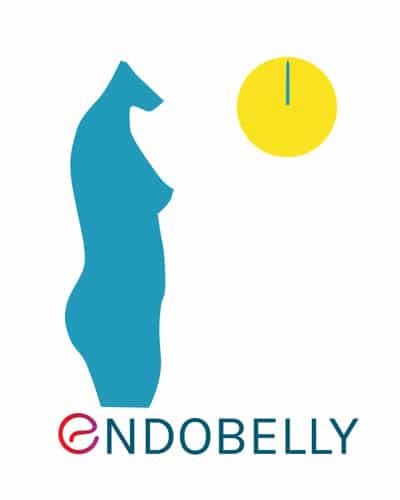How to Manage Endo Belly

Endo belly is a term that refers to the uncomfortable bloating that is common among patients with endometriosis.
It is often misdiagnosed as irritable bowel syndrome (IBS) due to similarities in symptoms. However, with endo belly, the severity in bloating and abdominal girth changes according to the menstrual cycle.
Understanding and managing endo belly is important to reduce pain and improve quality of life.
What causes endo belly?
Endo belly can occur due to several reasons including inflammation caused by the growth of endometrial tissue in the abdomen (endometriosis), small intestinal bacterial overgrowth (SIBO), or an accumulation of gas.
Research has shown that there may also be an association between endometriosis and autoimmune diseases such as Celiac disease, Sjogren’s syndrome, and rheumatoid arthritis that contributes to endo belly in some patients.
Some other signs of endo belly include a tight belly that feels rock hard, debilitating pelvic pain, and flare-ups when wearing tight clothes. Symptoms of endo belly usually subside within 24 to 48 hours of onset.
Is there a treatment for endo belly?
Managing the symptoms of endometriosis can help reduce the endo belly. Laparoscopic excision surgery is the gold standard in endometriosis treatment. If surgery is not an option, hormone therapies such as progestin-only pills, combined oral contraceptives, or gonadotropin receptor antagonists can help manage the symptoms of endometriosis.
Lifestyle changes to reduce endo belly
Switching to an anti-inflammatory, gluten-free diet and reducing consumption of caffeine, alcohol, processed foods, or refined sugars can ease endo belly. A low FODMAP diet may also help.
FODMAP is short for fermentable oligosaccharides, disaccharides, monosaccharides, and polyols. A FODMAP diet works by first stopping the intake of certain foods (high FODMAP foods). Then, they are each gradually reintroduced to see which ones are causing trouble so as to avoid them henceforth.
SIBO and gas accumulation can result in endo belly. So, avoiding foods that can potentially result in these conditions may also be helpful. For example, avoiding dairy, wheat-based foods, lentils, and garlic may minimize abdominal bloat and help reduce endo belly.
Additionally, adding magnesium, vegetables high in vitamin B, fiber, and iron to the diet, as well as drinking four to eight glasses of water per day may help reduce endo belly.
Endo belly results in extreme pain around the abdomen and pelvic region. Effective management of pelvic pain can offer some relief. Complementary therapies such as yoga, meditation, mindfulness, and pelvic floor physiotherapy can help reduce pain symptoms. Applying a heating pad to the abdominal area can also create a soothing effect.
Get a Second Opinion
Our endometriosis specialists are dedicated to providing patients with expert care. Whether you have been diagnosed or are looking to find a doctor, they are ready to help.Our office is located on 872 Fifth Avenue New York, NY 10065.
You may call us at (646) 960-3080 or have your case reviewed by clicking here.